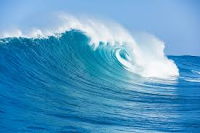Yancey reviews the history of writing assessment and describes three waves: testing, holistic scoring, and portfolio and program assessment. She asks what we can learn from writing assessment. That is a question we are addressing in our FYW program now in the Writing Committee meetings. Further, Yancey discusses the different realms of educators and testing specialists.
In the first wave, Deiderich seems overly confident in the assessment professionals' abilities to quantify good writing. Educators, on the other hand, were more concerned with validity than reliability and efficiency. However, it took 20 years for their concerns to create change in the system.
The second wave, spearheaded by White at Cal State in the 70's, included an actual writing test to evaluate writing. Of concern was cost, reliability, and efficiency, but he and his team managed to create an acceptable test. The test, however, was a measurement of more than just writing. It was correlated to wealth and parental education, not just writing. Therefore, the second wave had struggles and challenges that lead to the third wave.
The third wave is marked by collecting and scoring multiple drafts of writing: portfolio assessment. In this method of portfolio assessment, faculty read the portfolios in community and have to negotiate the standards and outcomes of the assessment practice. In this wave, writing assessment became recognized as a field. Also, questions emerged regarding who holds the "power" in assessment and how does it help to shape identity in students. I like the discussion of "fictionalizing" and "narrativizing." I find I struggle with this sometimes when grading. It is difficult to tune it out.
Yancey theorizes on what the fourth wave will look like. I think the fourth wave will indeed be electronic portfolios that are visual as well as textual, hyperlinked, and multimedia. I see that happening already.

No comments:
Post a Comment